This Must Be the Place: Latin American Artists in New York, 1965–1975 at Americas Society, New York, captures the city’s frenetic pulse
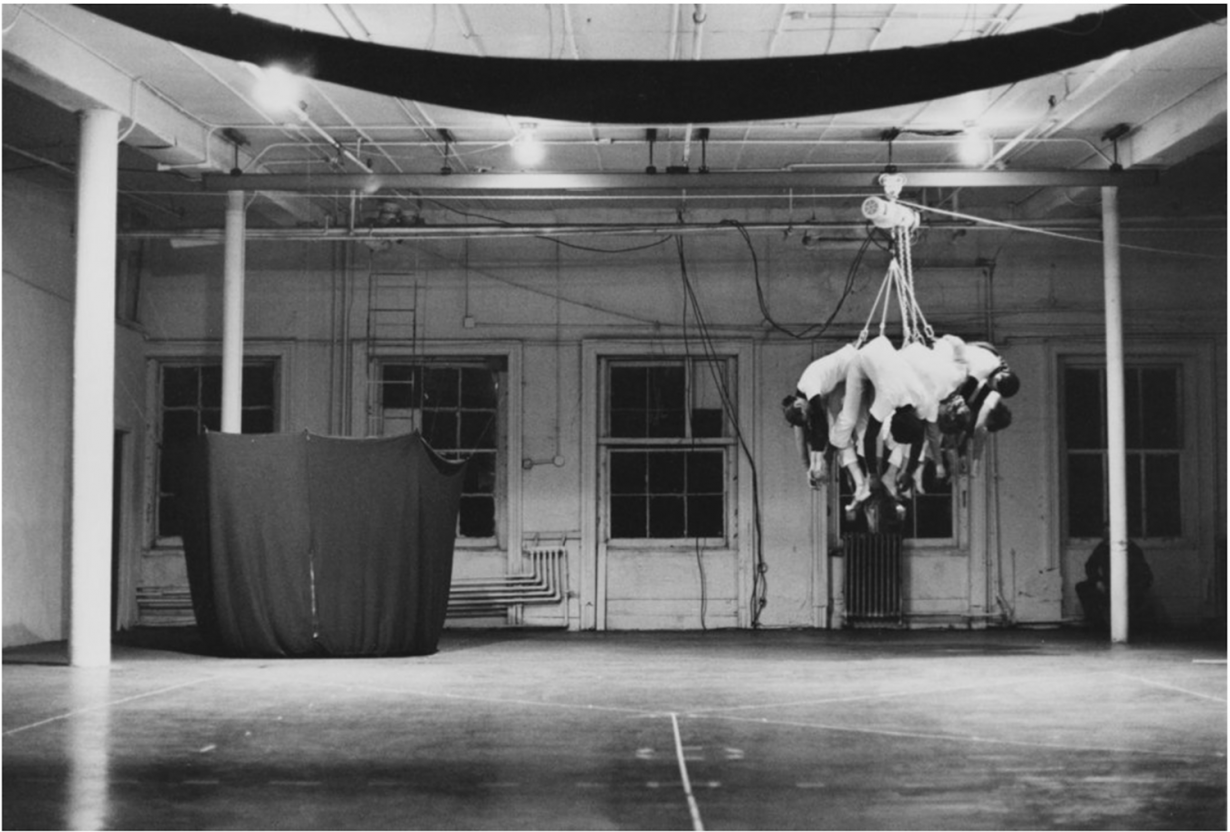
With vibrant counterculture, cheap rent, myriad art and gallery spaces, plus burgeoning experimental film, dance and theatre scenes, New York during the 1960s and 70s was an exciting, albeit gritty, place to be. Organised by Americas Society director Aimé Iglesias Lukin, with over 40 artists across three rooms, This Must Be the Place captures the city’s frenetic pulse. Its true revelation, however, is the sheer diversity of Latin American artists who visited the Big Apple, often to escape oppressive military regimes back home. Some, such as Luis Camnitzer, stayed on. Others, while not establishing strong local roots, used their sojourns to experiment in new methods and media – as Hélio Oiticica did with film. Though archival materials in the show touch on political collective actions, its chief insight is that, as much as they were shaped by it, Latin American artists made New York a creative mecca.
This is the second instalment of a two-part show (Part I closed this past December), both of which feature minimalist and conceptual artists reckoning with Pop art. In Part II, Eduardo Costa’s Fashion Fictions (1966–), a 24K-gold wearable sculpture photographed for Vogue by Richard Avedon encapsulates this affinity with advertising and commerce. The spectre of Andy Warhol as the quintessential New York artist haunts the galleries. Carlos Irizarry’s serigraph Andy Warhol (1970) reads as homage to Warhol’s iconic self-image and multiples. But the way Irizarry forces Warhol’s garish palette into a rigid grid and the smudgy Xerox-like surface subvert the originals’ mystique.
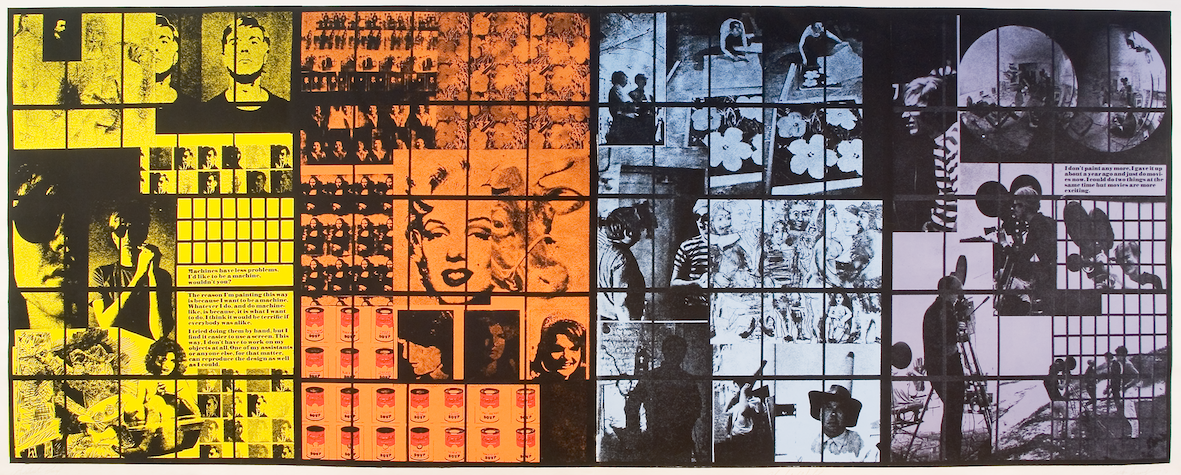
Barrio, New York
Self-reflexivity is a common theme in the minimalist works. Ana Maria Maiolino’s spare etching Escape Angle (1971), in which a white blob oozes out the corner of a black-outlined square, suggests a break with constructivist rigour. Rubens Gerchman’s Pocket Stuff (1971), a wooden box whose compactness and portability embody the notion of living out of one’s suitcase, as an immigrant might, ironises painting as the last bastion of high art in its miniature deconstructivist plastic squares (white, engraved with the word ‘White’, cobalt-blue engraved as ‘Sky’, etc). Similarly, in a series of etchings titled Envelope (1967), Luis Camnitzer wittily pairs a rectangle with a series of words (‘window’, ‘box’, ‘painting’, ‘grid’). By resignifying the figure as conceptually charged yet commonplace, Camnitzer reflects on art’s adjacency to life, and exposes the falsity of treating them as binary.
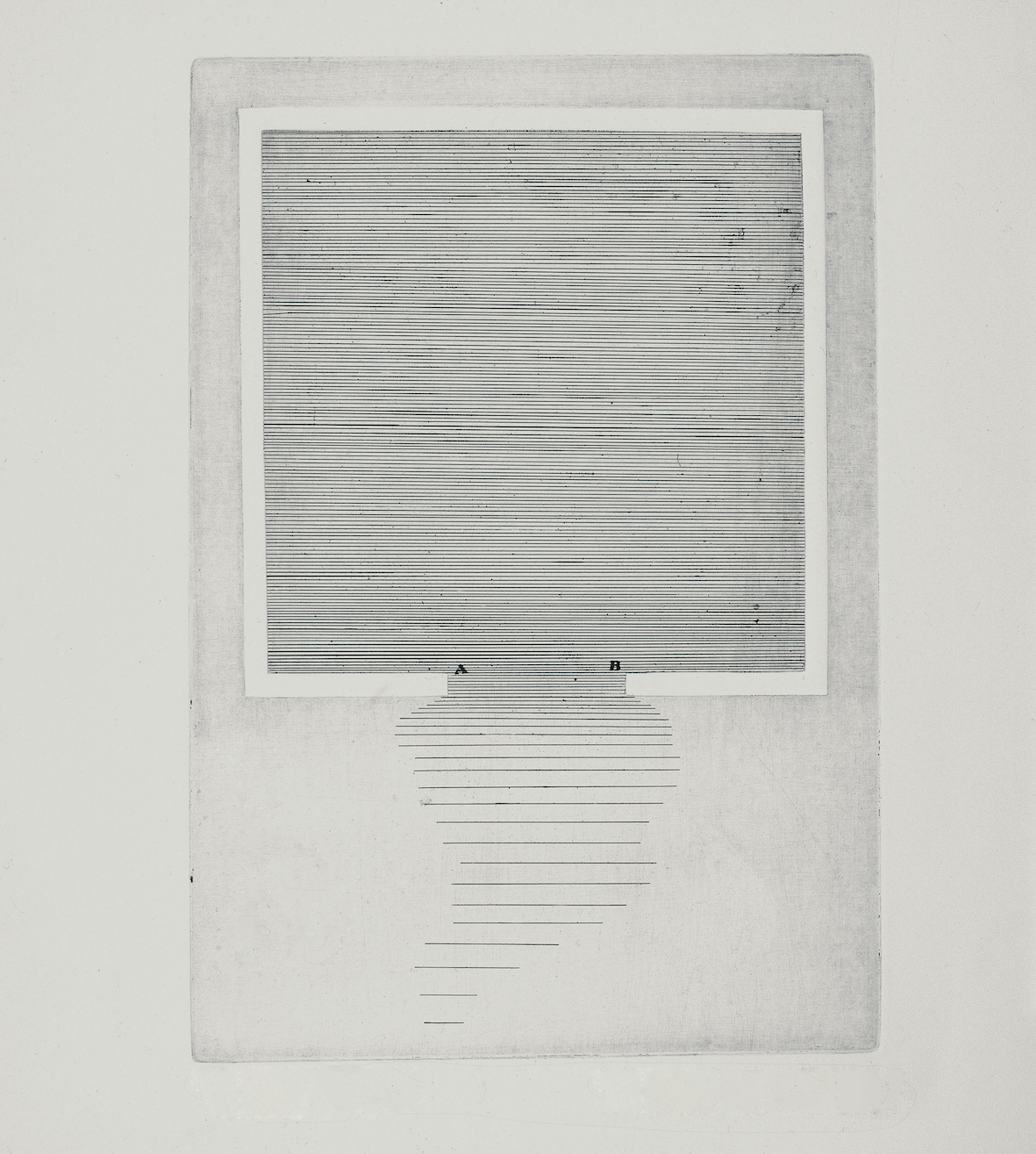
A serialist logic underpins many conceptual works, including Osvaldo Romberg’s Body typologies (1974/2014), a series of stills scrupulously cataloguing male body parts; at times in a playful manner, as in Fake Estates (Queens Project) (1975), a video in which Jaime Davidovich captures Gordon Matta-Clark’s ‘anarchitectural’ interventions of buying and documenting unusable, odd-sized lots of land, or in Marta Minujín’s phallic paintings Untitled, from the series Frozen Sex (1973). Yet more often, particularly in works that comingle seriality with self-portraiture, an eerie temporality ensues. In Leandro Katz’s S(h)elf Portrait (1972), in which 50 silver gelatin prints form a frame-within-a-frame study of a bookshelf, and Anna Bella Geiger’s Passagens (Passages) (1975), a photomontage inside an underground metro station, the human figure repeats obsessively, underscoring an anxiety, particularly acute in a metropolis like New York, of being one of many, a serialist iteration. The agon of exile, but also an existential one, injects psychology into minimalist, conceptual and process art.
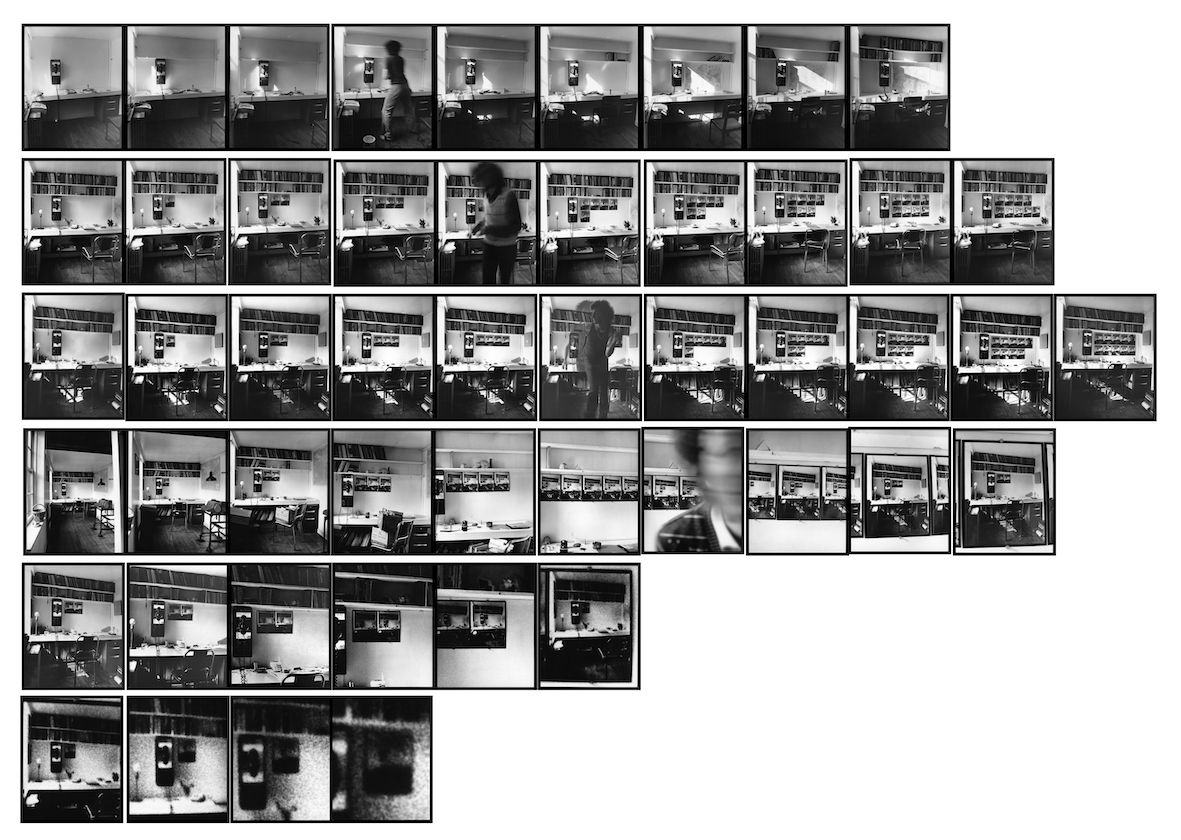
As minimalist codes loosen, the show shifts from object to experience expanded into the environment. Maiolino’s Escape Angle already signals a spilling over. In the same gallery, there’s Oiticica’s nylon-mesh and vinyl Parangolé Cape 24 (1972). Inspired by Brazil’s samba schools, Oiticica’s capes were worn in Rio de Janeiro by residents of poor communities. Staged on the heavily graffitied New York subway, Parangolé 30 (1972) might recall insouciant scenes from New York Magazine’s street-fashion spreads. But the artist’s choice of a Black performer suggests Oiticica was keenly aware that New York, like Rio, was subject to racial and social divides.
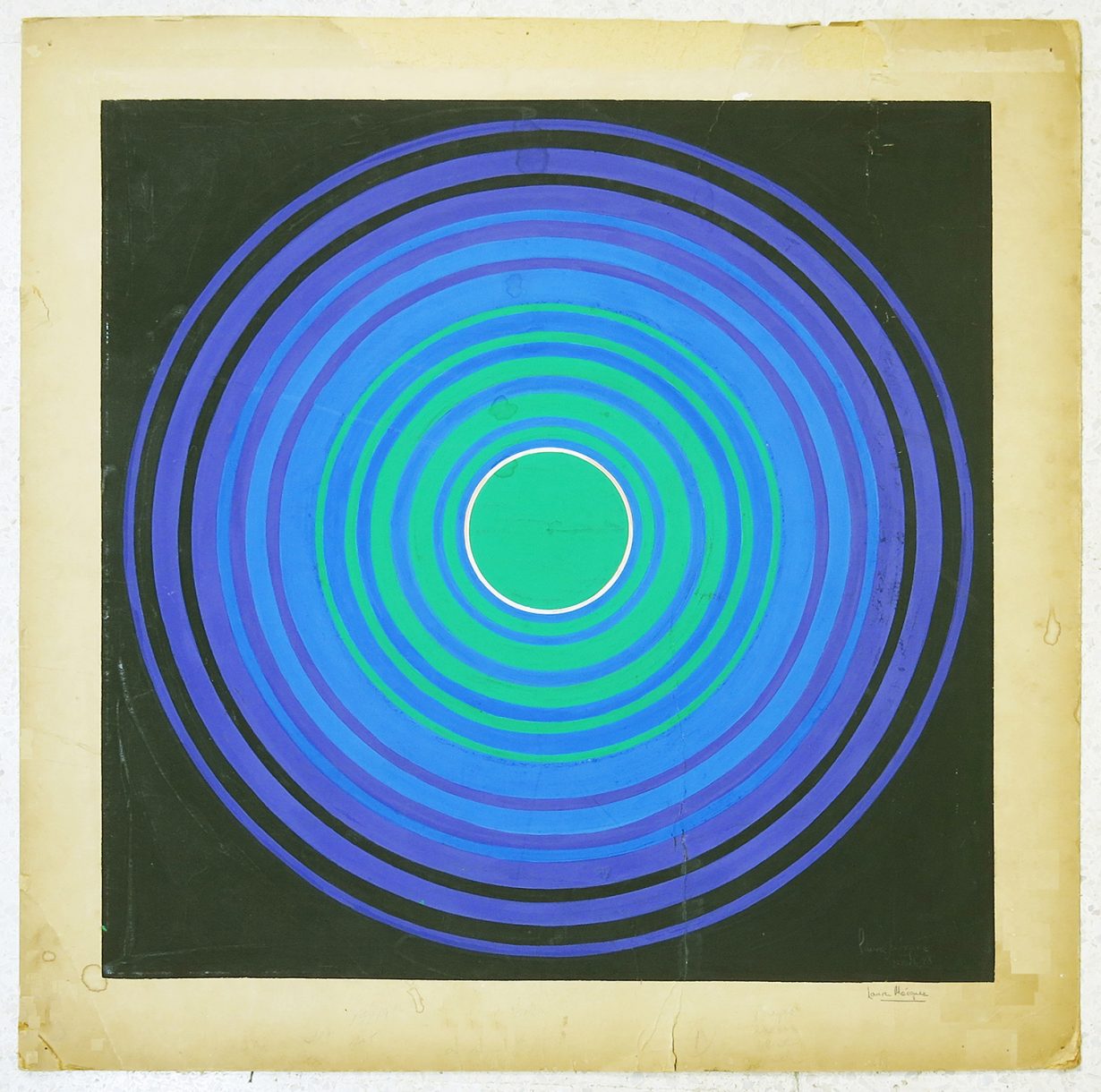
Second and third galleries underscore New York’s primacy for performance and interdisciplinary arts, registered in the photographic documentation of events such as Fashion Show, Poetry Event, Center for Inter-American Relations (1969), by Costa (with John Perreault and Hannah Weiner), in which nude models strut sculptural pieces; Katz’s photographs of the burlesque, collected as Bedlam Days: The Early Plays of Charles Ludlam and the Ridiculous Theatrical Company (founded in the mid-1960s) that epitomise the city’s queer and experimental theatre; and images of Sylvia Palacios Whitman’s and Carmen Beuchat’s postmodern dance.
By including a vast array of experiential works, Iglesias Lukin makes a salient point that while we often view immigration as an isolating experience, Latin American artists fomented New York’s cultural boom through at times fleeting yet supple collaborative networks.
This Must Be the Place: Latin American Artists in New York, 1965–1975 (Part II) at Americas Society, New York, through 14 May